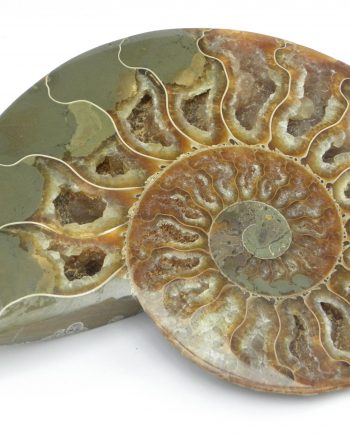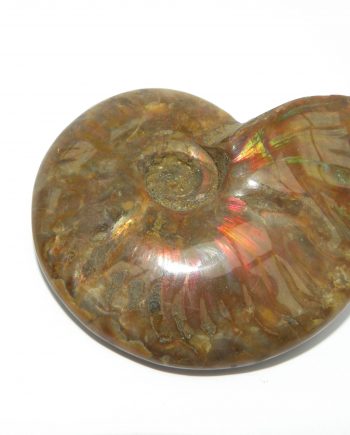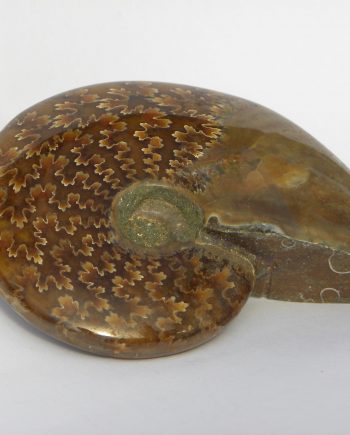Description
Ammonite Perisphinctes, Jurassic, 160 million years old
The Ammonite Perisphinctes has a very distinctive ribbing with characteristic fine coils. This specimen measures 9.2cm across, and weighs 260gm. These Ammonites date back to the Jurassic period, approx 160 million years ago. It is from the Tulear region of Southern Madagascar, a country famous for its fossils and also spectacular variety of minerals.
Ammonites have been extinct for 65 million years. They are a form of Cephalopod, a group of marine molluscs. These first appeared in the Devonian Period, over 4oo million years ago. The soft body tissues of the ammonites, are very rarely found fossilised. It is generally the tougher shells that have been preserved. As the ammonite grew larger it added new chambers to the shell. The actual creature though, only lived in the largest, and most recently formed chamber. The name Ammonite, derives from from ‘Ammon’ the Greek God. Ammonites were plankton feeders, with long tentacles, and they swam upright. Altogether, there were in the region of ten thousand different species. Ammonites became extinct 65 million years ago, at the same time as the dinosaurs. Although Ammonites themselves have long been extinct, the squid and octopus that swim in our seas now, are closely related.









